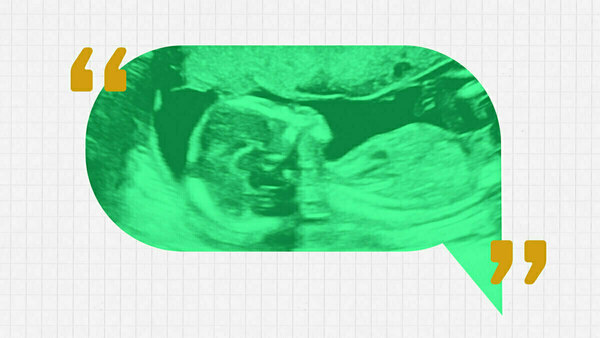New Study Highlights Mother-Child Link for Anemia in The Gambia

Anemia is a "silent epidemic." It affects nearly 2 billion people globally, yet many people ignore its symptoms. Typically caused by the consumption of iron-deficient foods, anemia develops gradually. Its symptoms—such as fatigue, weakness, and shortness of breath—are frequently dismissed or misattributed. Left untreated, it can impair growth and development, making it especially dangerous for pregnant women and young children. Over time, the effects of anemia extend beyond individual health by contributing to a cycle of poverty that affects entire communities.
In rural areas of the sub-Saharan African country of The Gambia, government data shows a high prevalence of anemia in young mothers and their children under five years of age, implying a causal association between them. In a recent study, the results of which are published in Nutrients, researchers from the University of Notre Dame further analyzed this association to determine its prevalence, possible causes, and predictability, as well as recommended strategies that could reverse this trend.
What started as a final project for a graduate-level course turned into a personal pursuit for Alhagie Sowe ‘24 MSGH, the study’s lead researcher, who was born and raised in The Gambia and went on to earn his Master of Science in Global Health (MSGH) degree at the University of Notre Dame. Upon completion of the program’s “Global Health Policy” course where Sowe presented initial data analysis on the subject, he and course professor Santosh Kumar Gautam, associate professor of development and global health economics in the Keough School of Global Affairs, along with MSGH director, Elizabeth Wood, associate professor of the practice with the Eck Institute for Global Health, pursued more in-depth data and analysis.

“This was the first research on the intergenerational association of anemia in The Gambia. The empirical data available through the Gambian Demographic Health Survey was never analyzed to the level that we did,” said Sowe. In addition, the Notre Dame researchers reviewed data from the collection of blood samples from women and young children to determine anemic status. They also studied other factors, including household wealth, maternal education, family sizes, birth orders of anemic children, and nutrition.
After rigorous data analysis, the study concluded that children born to anemic mothers were 13.5 percentage points more likely to also be anemic, as they are enveloped in the same socioeconomic environment with challenges in nutrition and diet diversity as their anemic mothers. Further, they found that those children in the poorest households had a “substantially higher risk” of developing anemia. This intergenerational association of anemia and its prevalence in resource-constrained areas of The Gambia highlights the attention needed to reverse the pervasiveness of anemia and its impact on poorer regions of the country.
“Anemia is under-researched, and it is a big issue,” said Gautam, who recently published research on a similar study in India. “Iron supplementation for pregnant women, greater diet diversity, as well as creating policies that facilitate access to effective maternal healthcare will help puncture the cycle of anemia development in the poorer regions of The Gambia.”
Wood added, “We can also work to change social norms around anemia. The first one thousand days of a child’s life are the most critical for good health. Mothers need consistent access to the best nutrition for their young children. The Eck Institute for Global Health is committed to such research in our Maternal, Newborn, and Child Health Initiative that addresses the critical healthcare needs of pregnant and postpartum women and their children.”
The researchers also found that children born to younger mothers with less than five years of education were also at greater risk of becoming anemic.
“Teen mothers are not always sure how to care for their new babies. Often, they are still going through puberty, so they experience significant blood loss and are not sure how to take care of themselves. So the birth order of their children also plays a part in the predictability of childhood anemia,” said Gautam.
“I grew up in rural Gambia in similar conditions as the people we studied, so this research hit home for me,” said Sowe. ”I could have been one of those children that we are analyzing today. Being a part of solving health disparities in my country is so important to me.”
Sowe’s work in this area continues. Recently, he shared the research findings with senior officials at the Ministry of Health in The Gambia, which included a representative from the World Health Organization (WHO) and other research institutions.
“I now have direct lines of communication with the Director of Public Health and other colleagues that can foster more collaboration and further studies to understand more about the causes of maternal and child anemia,” said Sowe. “We are hoping to share our findings more broadly and implement new policies that promote better nutrition for mothers and their young children.”
To learn more about Maternal, Newborn, and Child Health Initiative at the Eck Institute for Global Health, please visit globalhealth.nd.edu/impact.
[Note: This research was funded by the Eck Institute for Global Health.]
Contact:
Damienne Jugovic, Research Communications Specialist
Notre Dame Research / University of Notre Dame
djugovic@nd.edu / 574.631.7029
research.nd.edu / @UNDResearch
About the Eck Institute for Global Health
The Eck Institute for Global Health (EIGH), an integral part of Notre Dame Research, builds on the University’s historical strength in infectious disease research, including vector-borne diseases, while broadening the interdisciplinary expertise into other key global health areas including non-communicable diseases; maternal, newborn, and child health (MNCH); and global health security. EIGH recognizes health as a fundamental human right and promotes research, training, and service to advance health standards and reduce health disparities, especially for those who are disproportionately impacted by preventable diseases. The EIGH is training the next generation of global health researchers and leaders through undergraduate, Master of Science in Global Health, doctoral, and postdoctoral programs.
Originally published by at globalhealth.nd.edu on July 01, 2025.
Latest Research
- Doctoral student Joryán Hernández to receive inaugural Sr. Dianna Ortiz, OSU Peacemaker AwardJoryán Hernández, a peace studies and theology doctoral student at the University of Notre Dame, was tapped as the first-ever recipient of the Sr. Dianna Ortiz, OSU Peacemaker Award from Pax…
- The Institute for Educational Initiatives at Notre Dame Launches Free Math App to Help Teachers Strengthen Students’ Understanding of Numbers and OperationsThe Number Sense Assessment app gives educators quick, research-based insights to target instruction and improve student outcomes Notre Dame, IN — Researchers at the Institute for Educational Initiatives at the University of Notre Dame have launched…
- U.S. Senator Todd Young on bridge-building in Congress and Notre Dame’s role in strengthening civil discourseThe University’s home state Senator discusses the importance of fostering common ground, on Capitol Hill and on campus
- Notre Dame researchers to shed light on the Brazilian Amazon, conflict resolution, microplastics, and moreNotre Dame Research (NDR) has selected five awardees of the Research and Scholarship Program – Regular Grant (RSP-RG) and five awardees of the Research…
- First impressions count: How babies are talked about during ultrasounds impacts parent perceptions, caregiving relationshipPsychologist Kaylin Hill studied the impact of a parent’s first impression of their baby during an ultrasound exam. The words used by the medical professional to describe the baby (positive or negative) influence how the parents perceive their baby, relate to them after they're born and even how that child behaves as a toddler. The research has broad implications for how we train medical professionals to interact with expectant parents, as well as how we care for parents during the perinatal period when they are most susceptible to depression.
- Researchers at Notre Dame detect ‘forever chemicals’ in reusable feminine hygiene productsWhen a reporter with the Sierra Club magazine asked Graham Peaslee, a physicist at the University of Notre Dame, to test several different samples of unused menstrual underwear for per- and polyfluoroalkyl substances (PFAS) in 2019, the results fueled concern over chemical exposure in feminine hygiene products — which ultimately ended up in a $5 million lawsuit against the period and incontinence underwear brand Thinx. Then in 2023, the New York Times asked Peaslee to test 44 additional period and incontinence products for PFAS, a class of toxic fluorinated compounds inherently repellent to oil, water, soil and stains, and known as “forever chemicals” for their exceptionally strong chemical and thermal stability. Measurable PFAS were found in some layers of many of the products tested — some low enough to suggest the chemicals may have transferred off packaging materials, while others contained higher concentrations, suggesting the chemicals were intentionally used during the manufacturing process. In the meantime, another group of researchers published a study that found PFAS in single-use period products, leading Peaslee and his lab to widen their investigation into all sorts of reusable feminine hygiene products — often viewed as an eco-friendly option by consumers. Now, the results of that study have been published in Environmental Science & Technology Letters.













